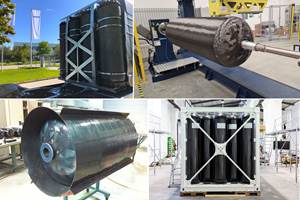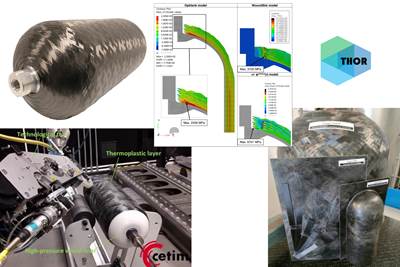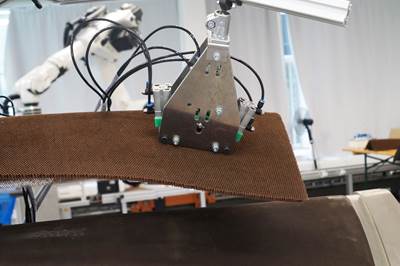DaQoTa project develops measuring head prototype for LATW inspection
Fraunhofer IPT, Taniq and Pixargus have proven the success of a measuring head capable of optimizing the reliability, security and efficiency of FRP pressure vessel manufacturing.
Featuring two cameras, two lighting elements and two lasers, this size-optimized measuring head has been designed specifically for the inspection of thin tapes. The detection algorithms from the ProfilControl 7 series have been adapted and optimized for this application. Here you see the interior of the measuring head. Source (All Images) | Pixargus GmbH
In a collaborative project with the Fraunhofer Institute for Production Technology (IPT, Aachen, Germany) and robotized winding systems company Taniq (Rotterdam, Netherlands), a new measuring head from Pixargus GmbH (Würselen, Germany) has proven highly successful in monitoring the quality of laser-assisted tape winding (LATW) in fiber-reinforced polymer (FRP) pressure vessel manufacturing. Measuring technology specialist Pixargus plans to take the successful prototype from this project to series maturity.
Tanks, whether for gas or hydrogen, developed to handle high pressures are typically reinforced with carbon fiber-reinforced thermoplastic tapes to increase their pressure resistance strength. As part of a joint R&D project, “Digitized and Quality-controlled Production of Composite Pressure Tanks” or DaQoTa, Pixargus developed an inline inspection system that takes digital quality control of safety-critical pressure vessels to a new level in terms of reliability, security and efficiency.
The system is a smaller and more lightweight version of the company’s ProfilControl technology. The optical sensor can be mounted directly onto the robotic arm of the winding system so that the tape can be more thoroughly checked while under dynamic loading, and directly where the laser process is taking place. The robotic laser arm — which joins the carbon fiber tape in thin layers with the pressure vessel surface — uses quality data continuously generated by the measuring system in real time to optimize the winding process.
Pixargus notes that, unlike most inspection systems, which can only inspect either the surface or the dimension during pressure vessel production, its prototype can do both. In just one measurement, the optical sensor detects surface defects and the thickness and width of the tape.
Moreover, spotting gaps, holes and ruptures has been made more intuitive. The system uses light reflection and light transmission techniques to not only identify defects detected by direct incident light such as inclusions, loose threads and other flaws in the tape, but also reliably detect gaps and ruptures through means of penetrating light. This is possible through a camera and lighting element arrangement adapted to the specific tape properties. The optical sensor captures up to 50 million pixels per second at a resolution of about 25 microns, detecting defects down to 0.3 millimeter in size, even at a maximum production speed of 18 meters/minute.
A look into the interior of the sensor head gives an impression of the elaborate image processing solution applied. All technological components are smartly arranged to require minimum space.
In an experimental setup at the Fraunhofer IPT, carbon fiber tape was run through the Pixargus prototype measuring head from a dispensing coil. Tape thickness and width were first measured by laser triangulation. “Both measurements are a challenge,” says a Pixargus product manager. “Because of the dark color of the carbon [fiber] filament, the tape surface is highly light absorbing. For optical laser triangulation measurements, this is definitely a challenging task. [Moreover] the tape arches as it is being drawn through the inspection system. In order to be able to measure a ‘curved length,’ highly complex mathematical methods have to be applied.”
To address these challenges, the partners succeeded in conceiving a concept of sophisticated lighting, size-optimized design and evaluation algorithms specifically adapted to this demanding inspection task.
Creation of a digital twin was an additional bonus to the prototype’s development. “We are now not only able to detect the quality-relevant properties of the FRP tape during the tank winding process, but we can also correlate the quality data of the tape with any position of the tank after winding,” says Pixargus measuring technology engineer Stephan Hennicken. To this purpose, the measuring system features equipment such as an incremental encoder to obtain the relevant path and position information. “In connection with the other data from the tape winding process, we can thus generate a digital twin of the complete pressure tank.”
The digital twin makes it possible to document the pressure strength of every tank and the existence of weak points, if any. This results offers a boost in safety in the production of high-performance pressure vessels. The layout of the project system could also make it possible to transmit the quality data to downstream components in real time and help optimize processes in subsequent production stages.
According to Pixargus, based on project results, it would take this prototype further into a series-ready system “within the framework of an adequate customer order.” Apart from this, the company plans to use its new know-how acquired during the R&D project for other purposes. “Customers often turn to us with the request for smaller, more compact measuring heads,” says Pixargus sales manager Michael Frohn. “This is a topic we will definitely go about.”
DaQoTa was carried out within the European funding program Eurostars. The German partners received funding from resources of the German Federal ministry of Education and Research (BMBF).
Related Content
Composites end markets: Aerospace (2023)
With COVID in the past and passengers flying again, commercial aircraft production is ramping up. The aerocomposites supply chain is busy developing new M&P for an approaching next-generation aircraft program.
Read MoreMidnight production aircraft completes full transition flight
This is Archer’s second full-scale eVTOL aircraft to achieve this milestone, critical to being able to carry commercially viable passenger payloads.
Read MoreComposite sidewall cover expands options for fire-safe rail components
R&D project by CG Rail explores use of carbon fiber-reinforced thermoplastics and recycled manufacturing scrap to meet fire safety, weight and volume targets.
Read MoreComposites end markets: Pressure vessels (2024)
The market for pressure vessels used to store zero-emission fuels is rapidly growing, with ongoing developments and commercialization of Type 3, 4 and 5 tanks.
Read MoreRead Next
Update: THOR project for industrialized, recyclable thermoplastic composite tanks for hydrogen storage
A look into the tape/liner materials, LATW/recycling processes, design software and new equipment toward commercialization of Type 4.5 tanks.
Read MoreACoSaLUS project updates for automated sandwich panel layup
Cevotec and project partners have made significant progress in line with 2023 completion, including improvement of automated handling, patch vision inspection, and the laminate design and patch placement process.
Read MoreThe next evolution in AFP
Automated fiber placement develops into more compact, flexible, modular and digitized systems with multi-material and process capabilities.
Read More

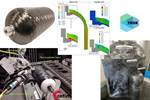
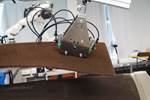
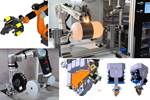
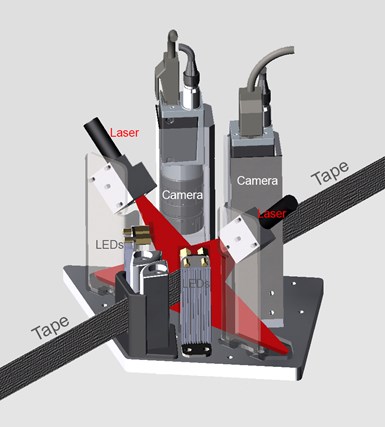



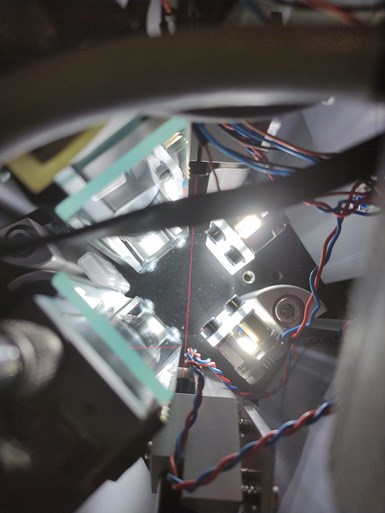











.jpg;maxWidth=300;quality=90)



